The Wellness Sabbatical
By Susie Ellis
The need to strike a balance between the pursuit of wellness and the need to work is the central concept of the wellness sabbatical.
You may have heard of the term “wellness sabbatical” but are not quite sure what the fuss is about. Believe me, the concept is groundbreaking!
What is a wellness sabbatical? Think three weeks (or longer) of focusing on your health and wellness—enough time to make lasting lifestyle changes. But (wait for it!), there is one significant differentiator from the usual wellness offerings: You will take along your smartphone or laptop to stay connected with your work—in fact, devices will be welcomed!
At times, people who have taken (or used) their devices on vacation have been shamed, but for many, disconnecting is just not possible—and it would contribute to their already high stress levels. The advice to disconnect from technology has long been trumpeted by doctors, parents and well-meaning people in the wellness space, but the reality is that for many this is no longer viable.
THE WELLNESS SABBATICAL: CONCEPTUAL FRAMEWORK
The need to strike a balance between the pursuit of wellness and the need to work is the central concept of the wellness sabbatical.
The statistics on ill-health are alarming, with preventable physical health issues increasing, obesity rates soaring and poor mental health skyrocketing. There is a general sense that people’s health and happiness are not what they should be. Life expectancy is not always within our control, but we need to hit the pause button to rethink and make the pursuit of wellness part of our lives.
Over the years, the time we have allocated to “recharging” has gotten shorter and shorter. We have gone from the three-week-long “taking a kur” (cure) common in Europe many decades ago, to one-week spa vacations (which are increasingly welcoming guests for much shorter stays). Many resort vacations have morphed into weekend getaways, and the day spa visit that started out being a full- or half-day package is now reduced to a dash in for one or two services—with the “express” version gaining in popularity.
It’s time for the pendulum to swing the other way.
The “sabbatical” explained
The term “sabbatical” can be traced back to the biblical term for a day of rest—the Sabbath. In years past, it was often teachers and academics who took a year off to spend time researching, writing or traveling. More recently, the term has been used to describe any time away from the traditional work environment that is used to recharge and to pursue personal passions.
Perfect match
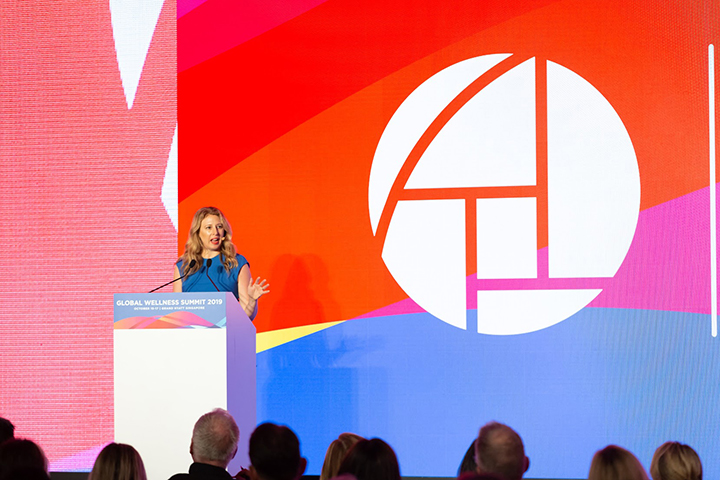
The term “sabbatical” works well with “wellness”—it communicates enough seriousness to describe the time away from the daily work environment as meaningful and yet includes a sense of freedom and self-directedness. If sabbaticals are time away to focus on a project, then this time the project is an immersion into our own personal health and wellbeing.
Fueling the trend
Technology has allowed us to become “digital nomads,” and the more comfortable you are working away from the office, the more successful your wellness sabbatical will be. A study[1] by Switzerland-based serviced office provider IWG found that 70 percent of professionals already work remotely at least one day a week and 53 percent work remotely for at least half of the week.
The ability to work from home and the emergence of digital office rental services such as WeWork are changing how we think about work, travel and wellness.
The travel world has already taken note and is offering up some unique options where co-working meets co-living: Roam, Outsite, Behere, The Remote Experience, Unsettled, The Nomad House and CoWoLi are examples. Gather, a new venture launching from Tel Aviv, is a monthlong program for those who want to work remotely in Israel while experiencing the communal Kibbutz lifestyle.
What you will experience on a wellness sabbatical
The most successful wellness sabbaticals will be those where the work and wellness programming is flexible but specific to each person’s unique needs.
The design of the programs will be according to the best evidence-based science. Ideally, these programs will be conducted in beautiful natural settings. Movement and exercise options will abound. Healthy food will be the only option on the menu, and stress-reducing treatments, meditation and healthy sleep will be high on the priority list.
Wellness education sessions will be interspersed with work and social interaction. Occasional outings will be on offer and having fun will be encouraged!
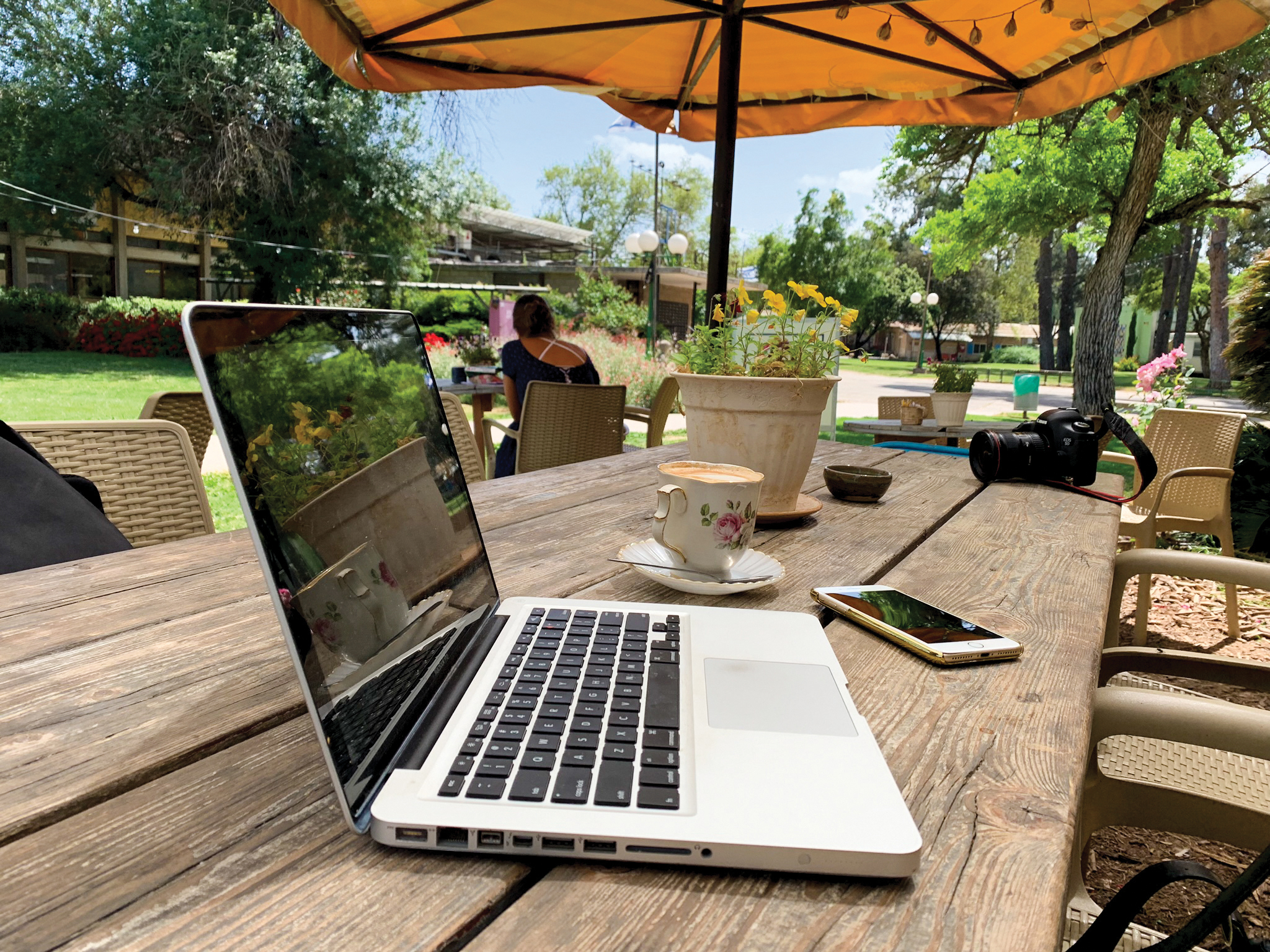
At the same time, there will be totally reliable connectivity and access to the latest technology. Working spaces will be set up to facilitate work time. Differentiators could include program flexibility to allow for working in different time zones and the provision of spaces to meet with a coworker to hold a meeting or conference call if required.
Most importantly, attention will be given to finding the ideal personal balance of work and wellness pursuits. Conventional wisdom points to a minimum of 21 days to make lasting lifestyle changes—exactly what we see as ideal for a wellness sabbatical. Guests need to experience and to internalize how it feels to attain the level of clear thinking and creativity that is present when one is relaxed. This can then be sustained beyond the three-week program.
Overwork is becoming less applauded
In many societies today, overworking is widespread, but there are some signs that countries, companies and individuals are making an effort to rein this in.
The research shows that working more than 55 hours a week results in an increased risk of stroke, coronary heart disease and premature death[2]. Concern about longevity urgently needs to be translated into action at both a societal and personal level.
A survey by China’s Wuhan University of Science and Technology shows that more than 80 percent of Chinese employees are overworked[3]. Incredibly, the billionaire founder of Alibaba, Jack Ma, recently put the spotlight on overworking but not in a good way. He referred to “working 996” (99; 6 days a week) as a “huge blessing[4]”!
The Japanese even have a word for death by overworking—karoshi[5].
The US worker is known for receiving less vacation time than many European counterparts, yet a recent Nielsen poll found that 52 percent[6] of workers didn’t take all of their paid vacation days.
Research is showing that people who take time off live longer and are happier in both their personal and work lives.
The workplace and the wellness sabbatical
The positive news is that CEOs of workplaces are becoming more cognizant of their workers’ health and wellness. Many companies are starting their own programs—or bringing in the professionals— and others are committing to becoming a company with a wellbeing culture. The wellness sabbatical will become another tool in the company toolkit. It has been reported that 25 percent of Fortune’s 100 Best Companies to Work, For now offer sabbaticals to their employees[7]. Employers need to look after their employees who make them big bucks!
The rising cost of healthcare
Statistics show that the rising cost of healthcare is unsustainable. Globally, 69 percent of all deaths each year are a result of preventable diseases[8]. The global cost of largely preventable chronic diseases (cardiovascular disease, chronic respiratory disease, cancer, diabetes and poor mental health) could reach $47 trillion by 2030[9].
The smart attention these days is on the prevention of ill-health, which just happens to be a major goal of wellness sabbaticals!
It’s easier to make healthy lifestyle choices when unhealthy choices are less available
Credit Dan Buettner, author of the Blue Zones books and articles, with identifying one of the most significant findings of achieving longevity[10, 11]. After 20 years of research and study in places with the highest numbers of centenarians (people who live healthy lives past 100), here is what Dan found:
“Instead of seeing a long, healthy life as a goal that required discipline, effort and a prescribed routine, people in the blue zones found it occurred almost naturally; it flowed from their surroundings. In these places, it seemed, the healthy choice wasn’t the deliberate choice; it was the unavoidable choice.”
Dan discovered that when you try to pursue health, happiness or longevity, it almost never works. The secret is that longevity results from being immersed in the right environment.
A wellness sabbatical is a 21-day experience (a rehearsal if you like) at this “right environment.”
Can I do a wellness sabbatical now?
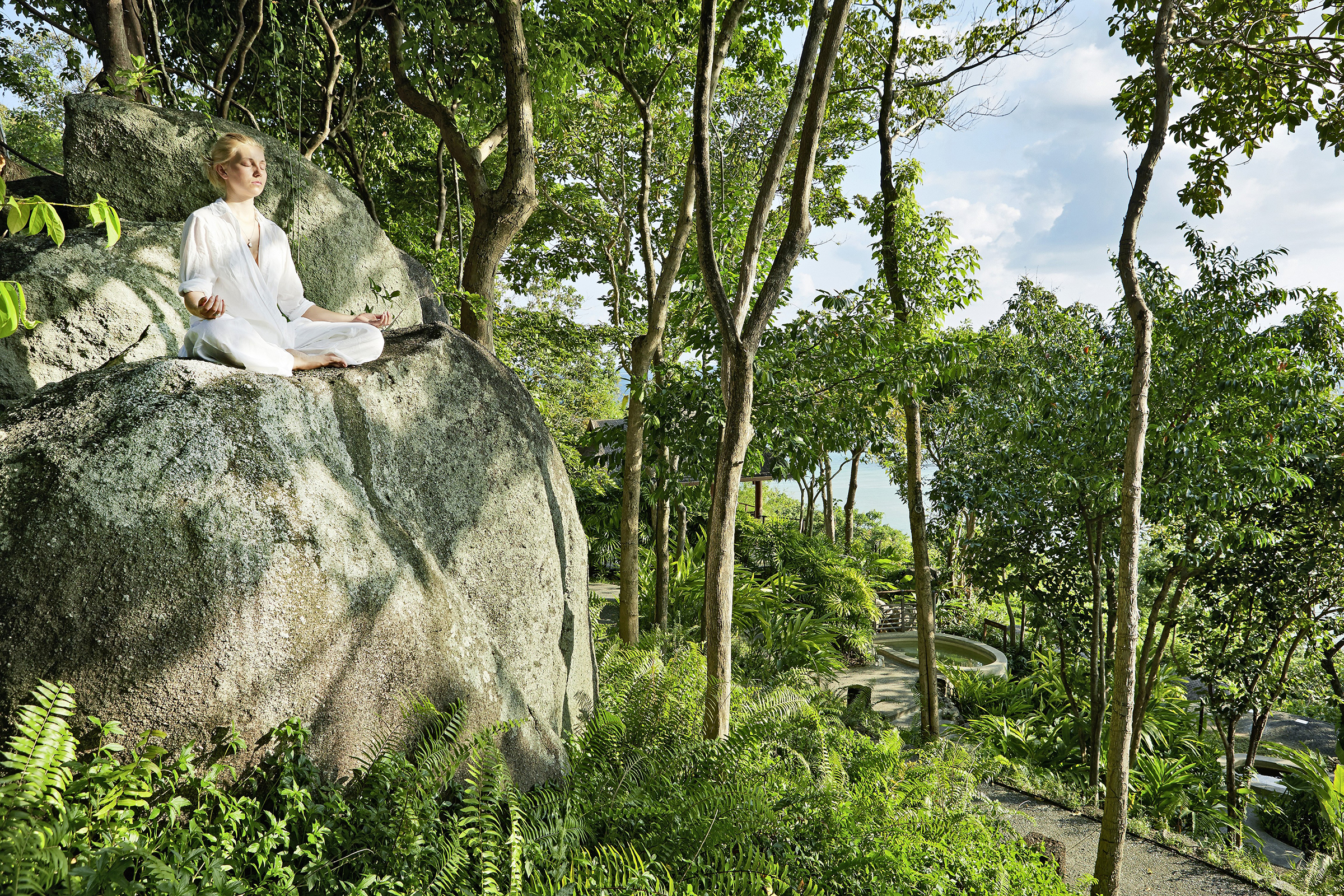
Happily, there are several places where the wellness sabbatical has already taken hold. Most are places where the environment was such that guests themselves began crafting their own long-stay programs, which made it easy for them to engage in wellness pursuits while working remotely.
Take Kamalaya’s Wellbeing Sabbatical[12], which has a minimum stay of 21 days. Located in Koh Samui, Thailand, this program is designed to go deeper than just relaxing or recharging. The staff recognizes that, for many, a clean break from work and business is impossible. Their program is, therefore, less structured, with emphasis on giving guests flexibility in scheduling treatments, healing and personal growth therapies. During Kamalaya’s Wellbeing Sabbatical, personal mentoring sessions are included. These are conducted to support guests in breaking through self-imposed restrictions, thereby gaining insights and perspectives that can lead them to truly thrive.
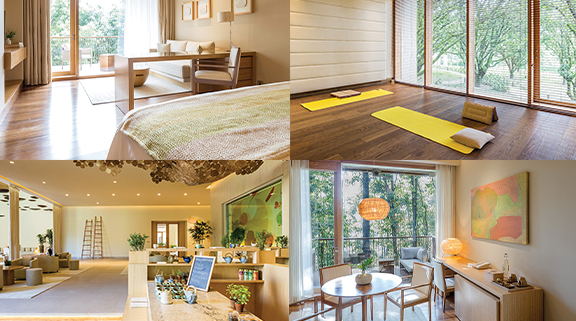
Another place that is already ideally set up for a wellness sabbatical is Vana in India[13]. Vana, which means “forest” in Sanskrit, was designed with the idea of personal transformation in mind. This relative newcomer to the immersive wellbeing scene was built incorporating the latest technology, making it all highly reliable. Its well-designed guest rooms—all with forest views—offer spacious areas to accomplish work without seeming the least bit officelike. Its program offerings and thoughtful approach to an individual’s personal health and wellness quite naturally fold in a person’s working life.
After seeing a significant rise in bookings for three-12-month multi-destination trips, UK creative travel company, Original Travel, launched an entire section dedicated to sabbaticals[14]. These include Family Sabbaticals, Back to Nature, Cultural Immersions, Learn a New Skill, Give Something Back—and Wellness Sabbaticals!
One of its signature wellness sabbatical itineraries, for instance, is three months in Asia, which takes you from the Himalayas to Japan, with yoga, hiking, tai chi and meditation included. Based on its own research into why clients take sabbaticals, Original Travel reported the motivations as self-improvement/taking time out to reassess (43.6 percent); to see the world while they can (46.2 percent); and to combat burnout/exhaustion (33 percent).
Original Travel also “walks the talk” by awarding its own employees three-month sabbaticals every five years.
Rancho La Puerta, located in Tecate, Mexico, added a trio of private casitas a few years ago[15]. Each includes a woodburning fireplace and secluded garden patio with a saltwater dipping pool. In-room treatments are possible and in-room Wi-Fi is assured. These accommodations are also customizable: You can request that your second room is set up as an office space, an additional bedroom, or a fitness wall. The most popular request? The office setup. Rancho La Puerta reports that top executives find the Cielo casitas an ideal way to interweave several hours of work each day whilst making progress in achieving needed lifestyle changes.
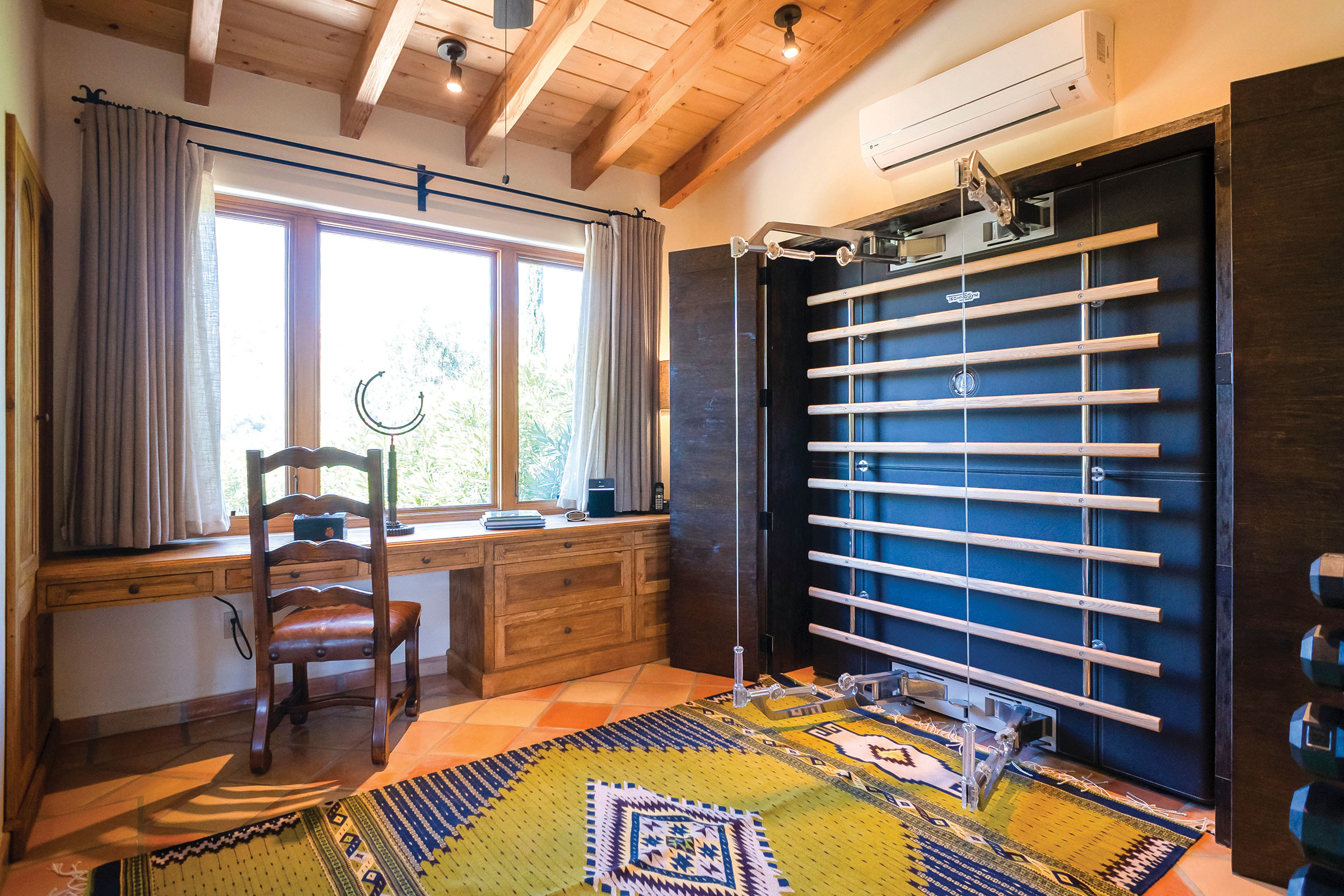
Finding wellness sabbatical places in the future
A sprinkling of places with 21-day programs already exists. While most are currently not oriented to encourage and incorporate a few hours of work daily, that adjustment could easily be made—and indeed, we are seeing that start to happen. These are most common at Ayurvedic retreats, various thermal/mineral spring experiences and some medical programs. Examples include Ananda in the Himalayas in India, Danubius Health Spa Resorts in Europe, Pritikin and Canyon Ranch in the US, Grayshott Hall in the UK, Kurotel in Brazil, and VivaMayr and Lanserhof in Austria and Germany.
There are also some excellent programs encouraging seven- or 14-day stays, which could easily be extended into 21-day wellness sabbaticals. Examples include SHA Wellness in Spain, Chiva Som in Thailand, The Ranch at Live Oak in Malibu and Longevity Wellness Resort in Portugal. Currently, however, these retreats don’t include specific programs or time to accommodate a person’s need to continue to work while engaging in their life-enhancing experiences. But that also is likely to change.
Affordable wellness sabbaticals
We are seeing increased offerings for affordable wellness getaways, often driven by millennials, the digital nomads. We expect some smart wellness destinations to use their off-seasons to make wellness sabbaticals truly cost-effective—not everyone can afford three weeks or longer in a luxury wellness resort.
That boom in co-living previously mentioned could easily morph into an extended and affordable wellness sabbatical.
Have a look at Amble[16], a crowd-funded start-up offering one-month destination sabbaticals tailored for skilled creative professionals and conducted in national parks across the US.16 At the cost of $1400 a month, the sabbatical includes lodging and some meals. Guests are required to devote 18 hours a week to various projects, as well as take part in guided and unguided hikes for personal regeneration. They describe it as “taking time away with purpose.”
We even envision the possibility of people creating their own wellness sabbaticals—in places where they can stay for six months to a year. And with some expert coaching and smart planning, staying at home on a wellness sabbatical is also a possibility.
A FINAL WORD OR THREE…
It is incumbent upon each of us to ensure we have a work and wellness balance that allows us to be well and to thrive.
Going forward, we see the wellness sabbatical being incorporated into literally hundreds of locations—from five-star destination spas to yoga retreats to one-star campsites.
The game-changing work + wellness concept embraced during wellness sabbaticals is rewriting the future of travel, wellness and work.
ENDNOTES
[1] Press Release: The End of the Traditional 9-5? IWG New Study Finds 70 Per Cent of Us Skip the Office to Work Elsewhere, IWG, 30 May 2018.
[2]Most Chinese employees overworked: survey, ChinaDaily, 2 November 2018.
[3]Alibaba’s Jack Ma defends China’s 996 schedule as tech workers protest against long working hours by Zheping Huang, South China Morning Post, 12 April 2019.
[4]Long working hours and risk of coronary heart disease and stroke by Prof Mika Kivimäki, PhD, et al., the Lancet, Volume 386, Issue 10005, 19 August 2015.
[5]Japanese Are Working Themselves to Death— Literally, USA Today, 17 October 2016.
[6]Why Paid Sabbaticals Are Good For Employees And Employers, Inc.com, 25 December 2013.
[7]State of American Vacation 2018, U.S. Travel Association, 8 May 2018.
[8]Center for Disease Control, 2017.
[9]The Global Economic Burden of Noncommunicable Diseases. Bloom, World Economic Forum and the Harvard School of Public Health, 2011.
[10]The Blue Zones by Dan Buettner, 2009.
[11]The Blue Zones of Happiness by Dan Buettner, 2017.
[12]https://www.kamalaya.com/wellbeing-sabbatical.htm
[13]https://www.vana.co.in/the-retreat
[14] https://www.originaltravel.co.uk/collections/ wellness-sabbaticals
[15]Rancho La Puerta’s Perfect Balance Sabbatical
[16]Considering a Sabbatical? The National Parks Want You by Lauren Matison, the New York Times, 4 September 2019.
Copyright © 2019-2020 by Global Wellness Summit.
If you cite ideas and information in this report please credit “2020 Wellness Trends, from the Global Wellness Summit”.
For more information, email beth.mcgroarty@www.globalwellnesssummit.com.

